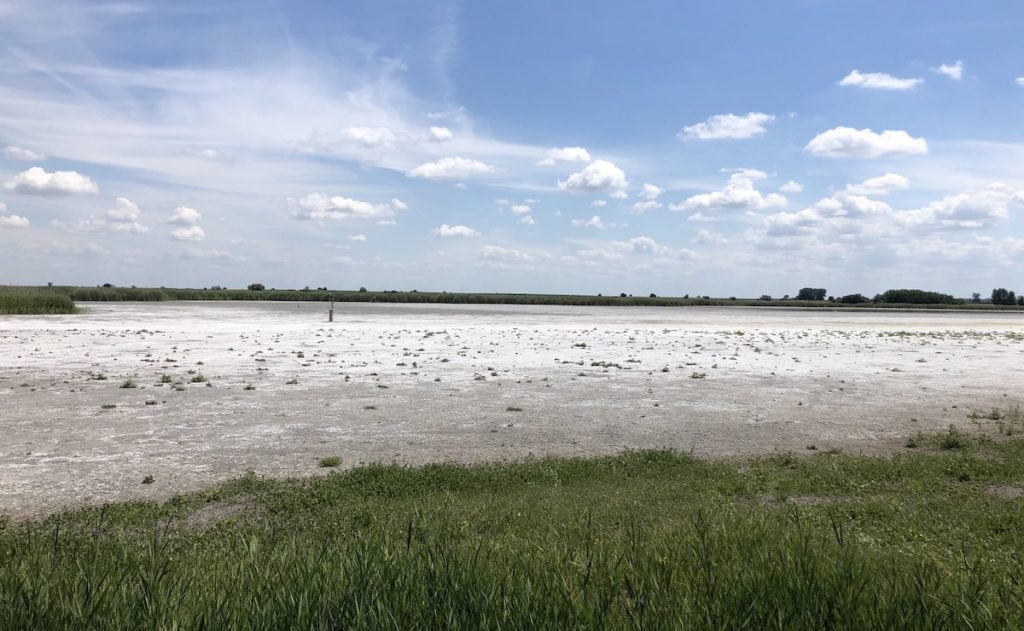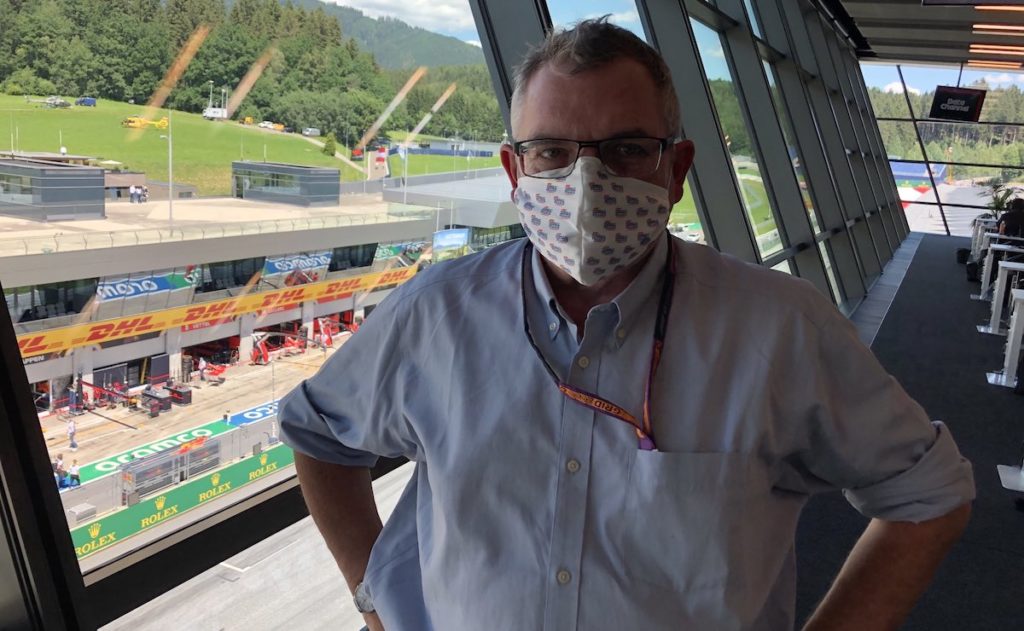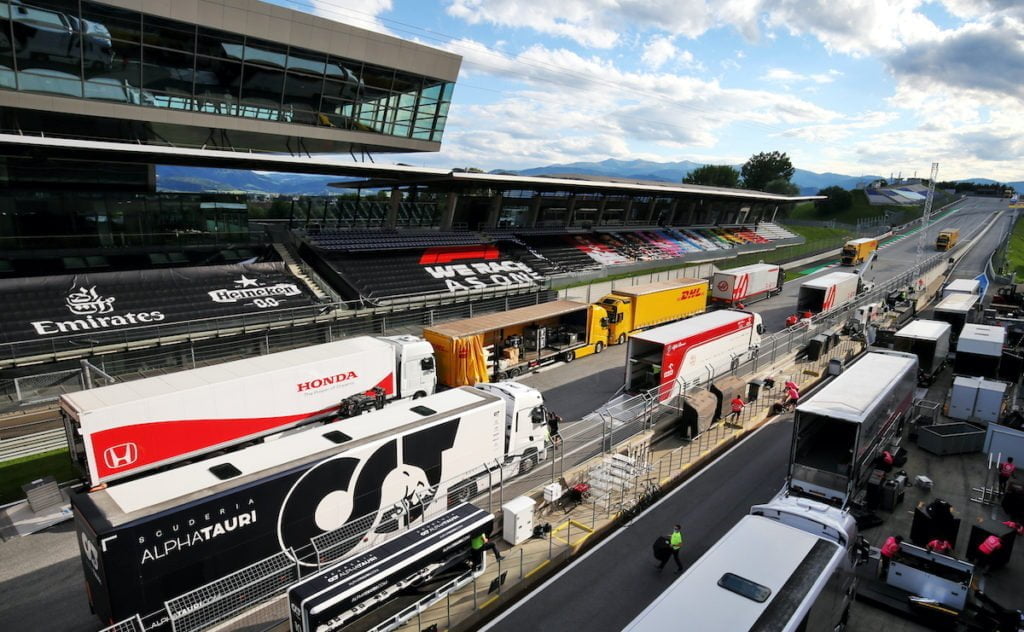If you’re pottering about and see a sign that says Untere Stinkensee, it takes a lot of self-control not to go and have a look – and I don’t have that much restraint. That’s how I ended up next to a dry lake, wondering if perhaps some elephants might wander by. In fact, I have discovered that there are actually two Stinkensees, the Oberere and the Untere, which translates (roughly) as Upper and Lower Smelly Lake. And you thought the British were the only people with daft names for places, like Shepherd’s Bottom, Batchelor’s Bump, Great Snoring and so on…
The Smelly Lakes are to be found in a corner of Austria called Burgenland, which is a narrow region along the Hungarian border, with the northern part straddling the Neusiedlsee. If you are going from the Red Bull Ring to the Hungaroring and don’t want to spend time in Hungary, this is a good place to be. It is a land of vineyards and quaint old towns, which is popular at holiday time because it’s the nearest thing Austria has to the seaside, with Podersdorf-am-See even boasting a beach. Much of the lake is surrounded by dense reeds, which grow from the mud, but this makes it a favourite spot for storks.
It’s a strange little corner of Europe which likes to call itself Pannonia, part of the vast plains which cover most of Hungary. Anyway, with Hungary having decided that British passport holders are unwelcome at the moment, the idea of going into the country and spending money was axed and instead I stayed in the town of Rust, I am sure they pronounce it “roost” but I think the English version is probably better.
It was in the region, in the town of Eisenstadt, that Joseph Haydn spent much of his career, including (so they say) writing a catchy little number called “Gott erhalte Franz den Kaiser“, which is better known today as the Deutschlandlied, the national anthem of Germany, which we hear every weekend Mercedes wins a Formula 1 race. I have a vague suspicion that we will be hearing a lot of Haydn this year as Lewis and Valtteri blitz the opposition.

The two race weekends in Austria were important for F1. They were pretty good races but in reality what was key was that F1 showed that it could host races in the time of Covid-19, with the 2,000 people involved undergoing around 9,000 tests without a single positive one between them. It showed that F1’s biosphere theory (or “Bubbles” if you prefer) actually worked. It might not have been your cup of tea but the same point was made with the bizarre radio-controlled boxes on wheels which were used to deliver the trophies to the winners.
F1 showed it was safe, responsible – and just a bit naff.
“I’m delighted that we have got the Formula 1 season going with two cracking Grands Prix,” said F1’s Ross Brawn. “I’d like to give a big thanks to and compliment all the people involved in getting us here. Everybody in F1 has been involved in getting us here, as you need every person to behave responsibly. It’s astonishing we have managed to get through the whole weekend, for the second successive time, with a clean bill of negative tests. There will be positive tests, I’m sure of it. When we do get those positive tests, we have to make sure we deal with them in the correct and proper fashion to minimise the impact they have on F1.
“It’s been a fantastic start. Everyone is so pleased and relieved that we have got the season going. Given the pandemic has affected countries in different ways, we have to be flexible during the next six months, but we have a reasonable programme ahead of us.”
Austria introduced us to “the new normal” and to the 2020 F1 pecking order. It worked well but then on Saturday the FIA issued a 19-page document giving details of the regulations in Hungary which were a lot less attractive with all non-EU folk (plus the British) having to stay within the confines of the Hungaroring circuit or in their hotels – and only travelling between the two; not being allowed to eat out, walk the streets or use public transport of any kind. With a £13,000 fine and the threat of being thrown in jail this meant people had to take it seriously and so hotels were rebooked, travel planned changed and paperwork collected. There were even rumours at one point that the Hungarian GP might be cancelled and a third race organised at the Red Bull Ring instead. To be quite honest I think I would have been happy with that. I like Austria.
This point was made once again on Sunday evening after the Styrian Grand Prix when the media staff came round and gave each of the 22 written press a poster, a Spielberg mask and a letter.

“What a historic start to the F1 season 2020 at the Red Bull Ring at Spielberg,” it read. “We want to say thank you for the cooperation and look back with pride over the last two weeks. To remember the first FIA Formula 1 double Grand Prix in time, we made a special print from the official poster for you. We hope to welcome all of you next year and wish you a good further season with many exciting races!”
It was a nice gesture – although I have to admit that I was just a little annoyed because I had sneakily figured out on arrival in Austria that a poster or a race programme for the two races would be something very valuable and so set out to find one. I was told by everyone that neither existed but there was a problem with that because I’d seen a poster on the wall when I picked up my car pass. I am no collector, but I read somewhere that the best forms of investment in recent years have not been stocks and shares, but rather exotic wine, artworks, classic cars and other such ephemera. I also saw that an original movie poster for the 1931 Dracula film sold for $528,000 and so I figured that my grandchildren might benefit one day. So I dropped into the same office a week later to ask if I needed a different car pass. The poster was gone and the place was closed up but I knocked on the door of the office and asked about the car pass. And then I mentioned that I’d really like to get one of the posters that I had seen. Where might I find one?
“Here,” the lady said. “We have a few”. She gave me two, each had been taped at the corners and I was pretty sure one of them was the original I had seen. I was excited, but I didn’t mention this to my colleagues in the Media Centre because I wanted to have the only two in existence…
Thus, I laughed out loud when they came around handing them out. OK. Maybe there are 30 of them of world, but at least I have three of them! I suppose it would be smart to get Lewis and Valtteri to sign one of them. But, of course, in the “new normal” that is not possible because we cannot meet face to face, at least for the foreseeable future.

The “new normal” is weird. On the Monday after the Styrian GP I was walking in a local town when I bumped into someone from the F1 Paddock bubble. We are not supposed to get too close to one another and so, standing at a suitable distance, we had a brief conversation which ended with the words: “I won’t see you in Hungary”…
Using various machines (and having the right numbers and addresses) I was able to keep at least some contact with the paddock, which was not shared by everyone else and it emerged from this that they were really enjoying themselves (except the folk at Ferrari) as the number of distractions was greatly reduced. There were no functions, no tiresome VIP guests – and no media. It was just motor racing – and for some this was a breath of fresh air…
My soft spot for Austria grew a little more on Monday morning when I was packing to leave for Burgenland. Herr Kaufmann, who runs the gasthaus where I always stay (and was his only guest this year) came rushing up (as fast as an 80-year-old man on crutches can rush), and handed me two race programmes. They weren’t from 2020 but rather from 1970 and 1971, the first two Austrian Grands Prix to take place at the Osterreichring (which is what the Red Bull Ring was called at that time). He showed me that there among the race officials was Hans Kaufmann, one of the two “zeilrichter” – the finish line judges. He told me some years ago that he had waved the chequered flag for first the GP at the Osterreichring.
When I handed the programmes back to him, he said no. They were for me. I’m not quite sure what he said because my German is not that good, but I suspect that it was something along the lines of them being more useful to me than to an old man. It was a lovely gesture from someone who shares my passion for Formula 1.
Another nice memory from Austria.








Great to have Joe’s column back. I look forward to them almost as much as the race.
I do enjoy these writings as much as the races.
Joe is a a Legend